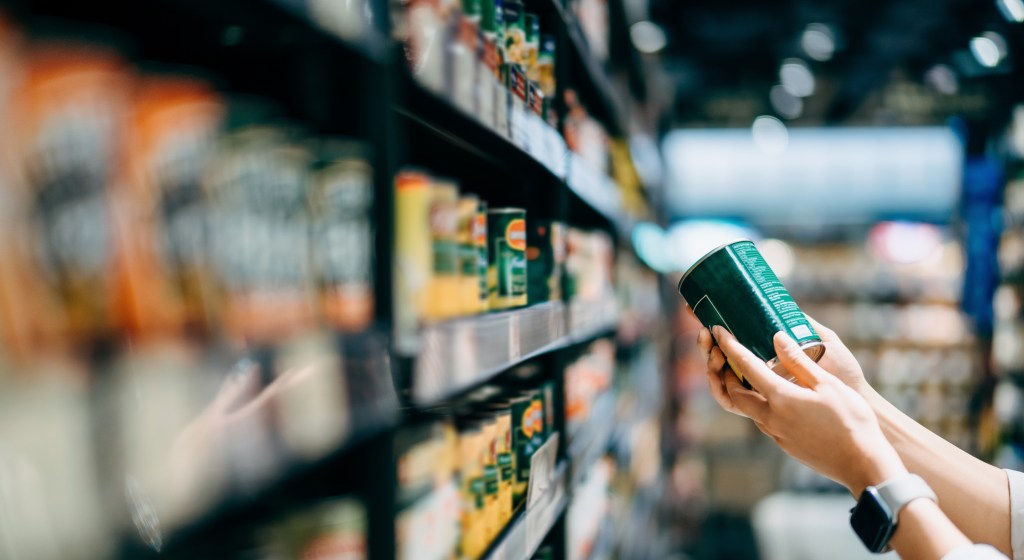While online has been growing as a channel in several developed markets in recent years, it’s broadening in scope, and is fast becoming a popular shopping destination for consumers around the world, particularly those looking to purchase premium products, as these platforms are able to attract shoppers and generate sales by providing exclusive product ranges and compelling deals.
According to a recent NielsenIQ survey, 45% of global consumers say they are shopping for premium products online from their home country e-retailers, whereas almost a quarter (24%) say they’re purchasing from overseas e-retailers. Consumers from developing countries like India (72%), Turkey (66%), and Indonesia (58%) are the most likely to shop online locally for premium products.
45% of global consumers say they are shopping for premium products online from their home country e-retailers
Our latest report on Changing Consumer Prosperity, which offers insights about consumers’ perception about premium attributes and their willingness to pay a premium for certain product categories, highlights that while online is growing in terms of overall popularity, 60% of consumers across the globe still prefer purchasing premium products from physical stores in their home country and 15% of consumers buy from overseas physical stores. Consumers in Hong Kong (38%), Croatia (36%), and Serbia (36%) purchase premium products from overseas physical stores.
The report also highlights a rising level of optimism among consumers in terms of their perceptions of their financial wellbeing over the last five years. Economic situations and other circumstantial factors, however, have also affected consumers’ mindsets when it comes to spending across fast-moving consumer products (FMCG) categories. Groceries, for example, remain on top of the list globally in terms of categories that consumers have been steadfast in their spending over the past five years, but we do see regional nuances to their overall spending. In Asia-Pacific, for instance top categories aside from groceries (46%) that are attracting consumer spending include education (44%), tech and communication (43%), leisure activities like dining out (43%), and travel (40%). For consumers in Africa, Middle East, and Latin America, education, technology, and health care are featured in the top five spending categories.
But in Europe, while 39% of consumers are spending more on groceries, they’re also spending more on utilities (33%), household goods (27%), rent and mortgage (25%), and technology and communication (25%). When we consider that 48% of European consumers say they only have ample funds for the basics, the increased spending on these other categories implies that they’re spending more due to increased costs of living.
Below is a snapshot displaying relative importance of premium product attributes that play a pivotal role in terms of consumers’ decision to pay a premium.
!function(e,t,s,i){var n=”InfogramEmbeds”,o=e.getElementsByTagName(“script”),d=o[0],r=/^http:/.test(e.location)?”http:”:”https:”;if(/^/{2}/.test(i)&&(i=r+i),window[n]&&window[n].initialized)window[n].process&&window[n].process();else if(!e.getElementById(s)){var a=e.createElement(“script”);a.async=1,a.id=s,a.src=i,d.parentNode.insertBefore(a,d)}}(document,0,”infogram-async”,”//e.infogram.com/js/dist/embed-loader-min.js”);
It can be inferred from the above illustration that consumers aren’t basing their purchase decisions solely on price point. Rather, they are seeking “premiumness” coming from value in combination with satisfying the need for convenient lifestyle solutions.
The key attributes that consumers around the world say they are seeking in premium products are superior quality (56%), performance (51%), design (43%), experience (42%), and brand (42%). Notably, around two in five global consumers (41%) say they are willing to pay more for organic and all natural ingredients. Similarly, 38% of consumers say they are willing to pay more for sustainable goods and 30% are willing to pay more for socially responsible products.
“When we look at consumers’ attitudes and behaviors around premium products, there are two quite different stories for developing versus developed markets,” observes Laura McCullough, Sales and Marketing Effectiveness, NielsenIQ. “Changing consumer prosperity in developing markets is enabling consumers to exercise their newfound purchasing power for global standards of goods and services, and a growing number of consumers are shifting toward affordable premium and niche segment products. There are premium product opportunities for retailers and brands in mature markets also, however identifying relevant market value propositions and point of differentiation can be challenging. A key watch-out for retailers is to avoid discounting products that consumers are willing to pay a premium for or heavily promoting categories that consumers are not excited about.”
The report further highlights that communication design and effective messaging also play a role in influencing consumers in their trial of new premium products. Close to half of consumers (46%) said recommendations and encouragement by friends and family influenced their decision to try out new premium products. According to 36% of consumers, product research is an important factor when they consider purchasing a premium product. Likewise, many consumers (32%) rely on online advertising, television advertising (31%), and in-store advertising (25%) that deliver the right engagement and outreach for premium products.
In certain FMCG categories, consumer mindset is shifting from luxury image towards specific functionality and convenience offering that a product is able to provide under its ‘premium’ claim. Therefore, it is important that manufacturers understand how consumers ascertain value to a given product category and what kind of elements differentiate premiumness.
For additional insights, download our Changing Consumer Prosperity report and watch our webinar recordings on this topic.




